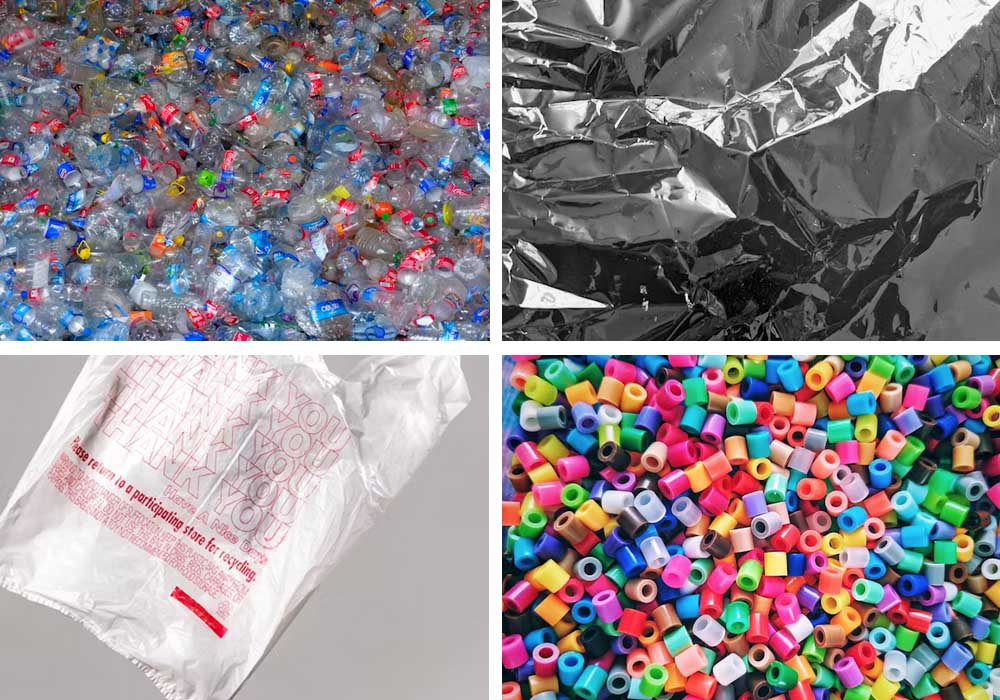PET Sorting Machine
HDPE Sorting Machine
LDPE Sorting Machine
PVC Sorting Machine
PP Sorting Machine
PS Sorting Machine
ABS Sorting Machine
Mixed Plastic Sorting Machine
Colored Plastic Sorting Machine
Clear Plastic Sorting Machine
Black Plastic Sorting Machine
Plastic Flake Sorting Machine
Plastic Pellet Sorting Machine
Rigid Plastic Sorting Machine
Film Plastic Sorting Machine
What is Plastic Sorting
Plastic sorting is an advanced process that separates different types of plastics based on their material composition, color, or other physical properties. This technology plays a crucial role in recycling and waste management, ensuring that plastics are efficiently sorted for reuse or proper disposal. Modern plastic sorting solutions utilize high-tech sensors and machine learning algorithms to achieve high accuracy and speed.
The importance of plastic sorting cannot be overstated, especially in today's environmentally conscious world. By sorting plastics effectively, we reduce landfill waste, conserve resources, and minimize pollution. Plastic sorting machines are designed to handle various forms of plastics, including flakes, pellets, rigid pieces, and flexible films, making them versatile tools in the recycling industry.

How Plastic Sorting Works
1 Material Feeding
Mixed plastics enter through vibratory feeders and are spread into single-layer formation, ensuring optimal scanning conditions for accurate identification.
2 Advanced Detection
NIR spectroscopy and RGB sensors analyze plastic composition and color at high speed, identifying resin types and contaminants with precision.
3 Real-Time Analysis
Sophisticated software processes sensor data, making split-second decisions for sorting categories with machine learning algorithms improving accuracy continuously.
4 Precision Separation
High-speed air jets and mechanical diverters sort plastics into categories with 95-99% purity rates, maximizing recycling efficiency.
Plastic sorting machines operate by analyzing the unique characteristics of each plastic item. They use near-infrared (NIR) spectroscopy, RGB color sensors, or other advanced detection technologies to identify different plastic types. Once identified, a combination of air jets, mechanical arms, or conveyor systems separates the materials into designated categories.
The sorting process begins with feeding mixed plastics into the machine, where they are spread into a single layer for accurate scanning. Sophisticated software processes the sensor data in real-time, making split-second decisions about each piece's destination. This automated approach ensures consistent results and minimizes human error, significantly improving recycling efficiency.
Key Features and Advantages of Plastic Sorting
Modern plastic sorting equipment offers remarkable precision, capable of distinguishing between closely related plastics like PET and PVC or different colors of the same material. High-speed processing allows these machines to sort thousands of pieces per hour, far outperforming manual sorting methods. Many systems now incorporate artificial intelligence to continuously improve their sorting accuracy through machine learning.
The environmental benefits of advanced plastic sorting are substantial. By increasing the purity of sorted materials, these machines enhance the quality of recycled products, creating a more sustainable circular economy. Businesses benefit from reduced waste disposal costs and potential revenue from selling properly sorted materials, while communities enjoy cleaner environments with less plastic pollution.
Technical Specifications of Plastic Sorting Machines
Plastic sorting systems vary in their technical specifications depending on their intended application. Typical machines process between 1-10 tons of material per hour, with higher-end models reaching up to 20 tons. Sorting accuracy generally exceeds 95% for most plastic types, with some specialized machines achieving near-perfect separation of specific materials like clear PET bottles.
These systems operate at various wavelength ranges for material identification, most commonly in the near-infrared spectrum (900-1700 nm). Modern sorters feature touchscreen interfaces for easy operation and remote monitoring capabilities. Energy consumption varies by size and throughput, with many models designed for energy efficiency to reduce operational costs.
Applications of Plastic Sorting
Plastic sorting technology serves numerous industries, from municipal recycling facilities to specialized plastic processing plants. In material recovery facilities (MRFs), these machines help separate valuable plastics from mixed waste streams. Plastic manufacturers use them to ensure material purity in production, while recycling centers rely on sorters to prepare materials for reprocessing.
The technology has particular importance in handling challenging materials like black plastics, which traditional optical sorters struggle with. Specialized machines can now identify and sort these previously problematic materials, significantly improving recycling rates. Other difficult-to-sort items like multi-layer packaging or small plastic flakes can also be effectively processed with advanced sorting equipment.
Purchasing Guide
When selecting a plastic sorting machine, consider your specific material stream and desired output quality. Assess the types and mixtures of plastics you need to process, as different machines specialize in various material combinations. Throughput requirements, available space, and budget are other critical factors that will influence your equipment choice.
Look for machines with flexible configurations that can adapt to changing material streams. Consider after-sales support and maintenance services, as these can significantly impact your long-term operational costs. Many manufacturers offer pilot testing opportunities, allowing you to evaluate a machine's performance with your actual materials before making a purchase decision.
Maintenance Guide
Regular maintenance is essential for optimal plastic sorter performance. Daily cleaning of optical sensors and inspection of mechanical components prevent accuracy degradation over time. Establish a maintenance schedule that includes lubrication of moving parts, checking air pressure systems, and verifying sensor calibration.
Keep spare parts for critical components on hand to minimize downtime during repairs. Train operators to recognize early signs of potential issues, such as decreasing sorting accuracy or unusual noises. Many modern machines include self-diagnostic features that alert operators to maintenance needs, helping prevent major breakdowns.